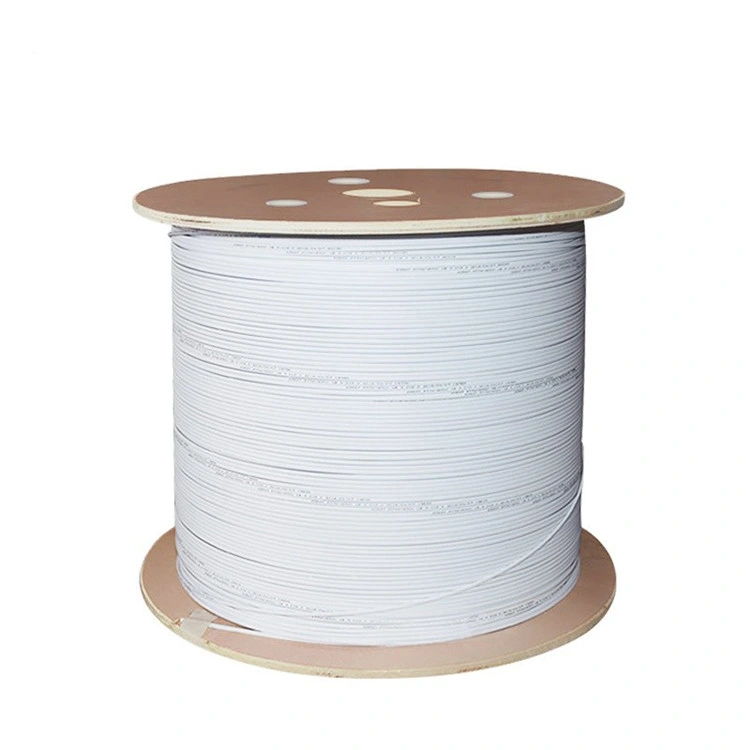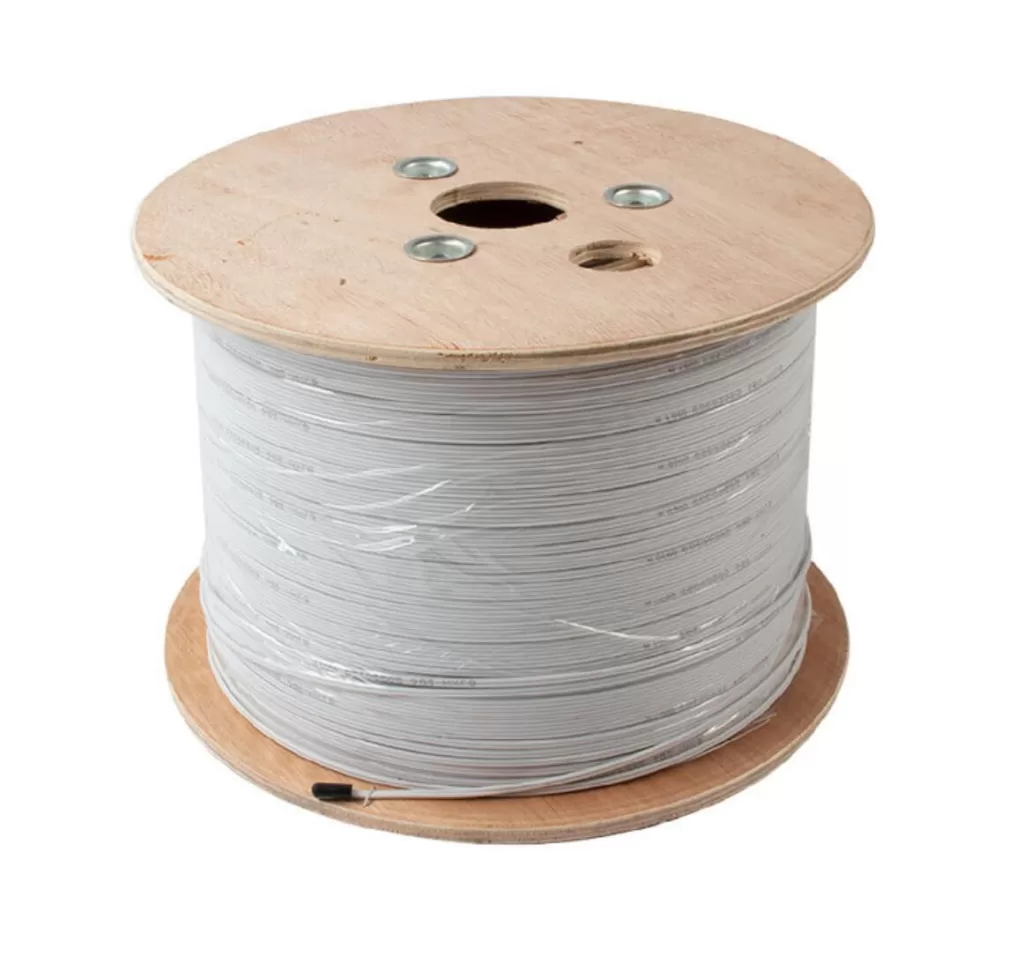In today’s rapidly expanding fiber optic landscape, choosing the right components is critical for efficient and reliable Fiber to the Home (FTTH) deployments. One such essential component is the Round FTTH Drop Cable, which plays a pivotal role in delivering optical signals from the distribution point to individual subscribers. Whether you’re a telecom operator, contractor, or integrator, selecting the right type of drop cable can significantly affect your installation time, signal quality, and long-term network stability.
What Is a Round FTTH Drop Cable?

A Round FTTH Drop Cable is a fiber optic cable designed specifically for the last-mile connection in fiber networks. It is used to connect the main distribution cable to end-user premises, such as homes, apartments, and small businesses. Unlike flat drop cables, the round variant features a cylindrical design, typically with a 4.8mm outer diameter, which makes it more robust and suitable for both indoor and outdoor installations.
Structure of Round FTTH Drop Cable
A standard 4.8mm Round FTTH Drop Cable typically consists of the following components:
- Optical Fiber: Usually G.657A1 or G.657A2 bend-insensitive fiber for superior performance in tight spaces.
- Tight Buffer or Loose Tube: Provides additional protection to the optical fiber.
- Strength Members: Often made of steel wire, FRP (fiber-reinforced plastic), or aramid yarn to reinforce the cable and resist tension during pulling.
- Outer Jacket: Made from LSZH (Low Smoke Zero Halogen) or UV-resistant HDPE, ensuring safety and durability in various environments.
Benefits of Using Round FTTH Drop Cable
Choosing a Round FTTH Drop Cable offers several advantages over flat or figure-8 cables, particularly in deployment environments that demand flexibility and resilience.
1. Durabilidade
The round shape offers better crush resistance and tensile strength, making it suitable for underground or aerial installations.
2. Instalação fácil
Its smooth outer sheath enables easy routing through conduits, ducts, or tight corners with less friction.
3. Versatilidade
Suitable for indoor, outdoor, and hybrid environments, and compatible with many installation methods such as splicing, field termination, or pre-connectorized solutions.
4. Bend Insensitivity
Most Round FTTH Drop Cables are equipped with G.657A2 fiber, allowing for tight bending radii without signal loss—ideal for MDU and in-home installations.
5. Aesthetics
The symmetrical round design is more visually discreet when deployed along ceilings, corners, or wall trims in residential spaces.
Key Specifications to Consider
When choosing a Round FTTH Drop Cable, several specifications should be evaluated based on the deployment scenario:
| Parâmetro | Typical Value (4.8mm Round Cable) |
|---|---|
| Outer Diameter | 4.8 mm |
| Contagem de fibras | 1 to 2 (single fiber or duplex options) |
| Tipo de fibra | G.657A1 / G.657A2 (bend-insensitive) |
| Resistência à tracção | 80–150 N (Installation) |
| Crush Resistance | ≥500 N/100mm |
| Minimum Bending Radius | 10x Cable Diameter (Static); 20x (Dynamic) |
| Temperatura de operação | -20°C to +70°C |
| Material da jaqueta | LSZH, PE, or UV-resistant HDPE |
Always confirm whether the cable meets international standards such as ITU-T, IEC, and Telcordia GR-20, especially for regulated projects.
Formulários
It is ideal for a wide range of scenarios, including:
- Direct Buried Installations: With armored or PE-jacketed versions.
- Conduit Deployments: Easy to pull through ducts and micro-tubes.
- Aerial Installations: Strand-mounted or self-supporting versions are available.
- Indoor Routing: LSZH jackets allow safe indoor routing with low flame spread and smoke emission.
- Pre-connectorized Solutions: Compatible with SC/APC, LC, or MPO connectors for plug-and-play deployment.
4.8mm Round FTTH Drop Cable vs. Flat Drop Cable
| Recurso | Round FTTH Drop Cable | Flat Drop Cable |
|---|---|---|
| Shape | Cylindrical | Flat rectangular |
| Flexibilidade | Mais alto | Moderate |
| Pulling Resistance | Better | Adequate |
| Installation in Conduit | Easier | Slightly harder |
| Aesthetic Indoor Appearance | Discreet | Visible |
| Crush Resistance | Mais alto | Mais baixo |
| Cable Management | Better in tight spaces | Less flexible |
How to Choose the Right Round FTTH Drop Cable

1. Deployment Environment
- For underground use, select cables with a thicker HDPE sheath and optional steel wire or corrugated steel armor.
- For indoor use, LSZH jackets ensure safety in case of fire.
- For aerial installations, self-supporting cables with steel messenger wires are recommended.
2. Tipo de fibra
G.657A2 is preferred for complex indoor environments with tight bends. G.657A1 may be sufficient for standard outdoor applications.
3. Cable Strength
Ensure the cable meets the tensile strength and crush resistance needed for your application. For installations requiring long pulling distances, high-strength aramid yarns are essential.
4. Material da jaqueta
Choose UV-resistant and flame-retardant materials for outdoor and indoor deployments respectively. LSZH is a standard requirement in public and enclosed spaces.
5. Pre-Connectorization
If you’re looking to minimize on-site termination, consider pre-connectorized Round FTTH Drop Cables with SC/APC or LC connectors. These reduce installation time and require less technical expertise.
Why Choose Our 4.8mm Round FTTH Drop Cable?
As a trusted manufacturer, we offer:
- Factory-direct pricing with strict quality control
- OEM/ODM customization for fiber type, length, color, and jacket material
- Conformidade with GR-326, ITU-T G.657A, IEC, and RoHS standards
- Pre-terminated options with SC/APC, SC/UPC, or LC connectors
- Fast turnaround with global shipping and low MOQs
Our production facilities are equipped with state-of-the-art machinery for fiber coloring, secondary coating, stranding, jacketing, and optical testing. We can supply bulk orders or support small-volume prototyping for your FTTH project.
Conclusão
O Round FTTH Drop Cable is a versatile and reliable solution for last-mile fiber deployments, offering enhanced durability, flexibility, and ease of installation. When selecting the right cable, consider your environment, fiber type, and installation method.
Contact us today to request samples, datasheets, or custom quotations for your next fiber project.
Our Email: [email protected]
